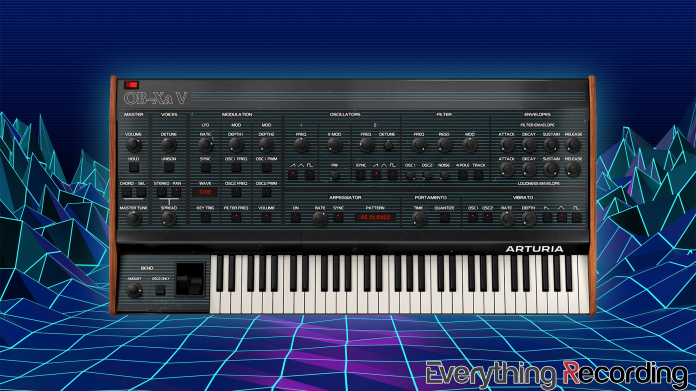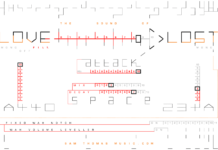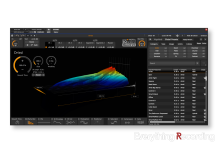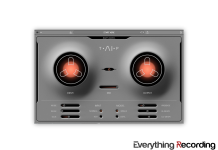WELCOME TO 1984… AGAIN…
At the dawn of the 1980’s, analog synthesizers were riding an all-time high. Those impressive behemoths could be heard everywhere from the proggiest of wizard rock to the sleaziest, sweatiest funk to the most candy-coated of pop anthems. The Oberheim OB series continued to up the bar, replacing its predecessors with not only additional features and polyphony, but a big technological jump by implementing Curtis Integrated Circuits, making these $7000 beasts more capable, reliable, expandable and easy to repair. Though competing designs from Moog and Sequential Circuits kept it race competitive, the OB-Xa’s sound had an irrefutable “it factor” that found its way onto many a Sony Walkman.

While the era’s quirky fashions came and went quickly, no decade in recent history has had such a memorable look and lifestyle quite the way the 1980’s did. The crimped hair, the dayglo everything, the “Frankie Says” t-shirts… it was ten years of Rick James-esque excess that simply had to be experienced to be believed. In cable tv-equipped living rooms across the world, music became a truly visual medium. Launched in 1980, the Oberheim OB-Xa is a living, breathing classic – and its legendary sounds helped define a decade.
Though digital synthesizers and samplers would soon begin to chip away the analog synthesizer’s market mid-decade, the OB-Xa was heard on the era’s most memorable songs. Notably, one fine day in 1983, one curiously cheery guitar virtuoso stunned the metal world by opening his band’s biggest hit to date with the iconic brassy saw-wave intro to “Jump.” Mulleted butt rockers wouldn’t experience an existential crisis this crippling until Judas Priest’s Rob Halford confirmed why he was so “Hellbent For Leather” fifteen years later (in retrospect, it was kind of obvious).
Analog synths enjoyed a tremendous “rebirth” as the world lurched towards the anti-cataclysmic Y2K. Practically discarded Junos, Jupiters and Prophets quickly went from garage sales and pawn shops to selling for often three or four times their original value. Their oscillators and filter’s trademark yowl, yip and growl became extremely coveted in electronic music – even as physical modelling synthesizers like the Nord Lead and the Roland JP-8000 faithfully recreated them. Here we are, over twenty years beyond that and musicians are still looking for exacting sonic replicas of these relics.
Well, with Arturia’s OB-Xa V? They’ve found it.
PUT THOSE NEON JELLY BRACELETS ON
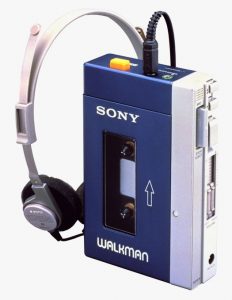
Okay, let’s just say this at the outset. This thing has so much 1980’s packed under its hood you just might have a flashback nosebleed. It blats, it blerps, swooshes, rumbles, pierces, swells, slides and stabs very, very faithfully to the original. You want the funk of Rick James or the fluff of Flock of Seagulls? Boy, do you have it. Want to indulge your inner Nile Rodgers or watch 99 luft balloons go by? Just add MIDI and some line noise. On that note, the original was sometimes prone to oscillator drift and RF noise. You can always recreate that with the modulation matrix feature (keep reading).
With the OB-Xa V, you really do have the quintessential 80’s analog sound right under your fingers. Whether you’re after the plush pads, the meaty low basses or scorching leads, this synth is happy to indulge your every whim. But the good souls at Arturia knew that not every night is 80’s night – and this synth is more than ready to help you craft the sounds of tomorrow.
GETTING GOOEY
Loading up the OB-Xa the first time, you’re greeted with the patinaed black-and-blue fascia of this classic monster, albeit compacted for a computer display. If you’ve never even laid eyes on the original, let me just say this: The Oberheim OB-Xa was quite the hefty sucker – almost two feet deep and fifty pounds. Nobody was putting a guitar strap on one of these back then, that much I assure you. So let’s just thank the tech wizards at Arturia for getting all of that real estate onto a laptop. You’re presented with the same parameters exactly as they were on the original (save for patch navigation and arpeggiation). And like the original, It’s easy to get up and going, though some could be thrown with the amp and filter envelopes being placed on the far right.
As you’ve come to expect, Arturia are nice enough to provide both a CPU meter and a panic button along the bottom. Hate to say it, but when MIDI is involved, notes get stuck. And when analog-modelling is happening, lesser CPU’s and RAM allowances can feel the pain, especially at lower buffer settings or as part of these 150+ track counts people are creating nowadays. That’s not to say the OB-Xa is a heavy eater, most users shouldn’t see a sizable dent in their available CPU cycles. Compared to the last generation of processors, today’s multi-multi-core monsters can really handle quite a bit of pressure.
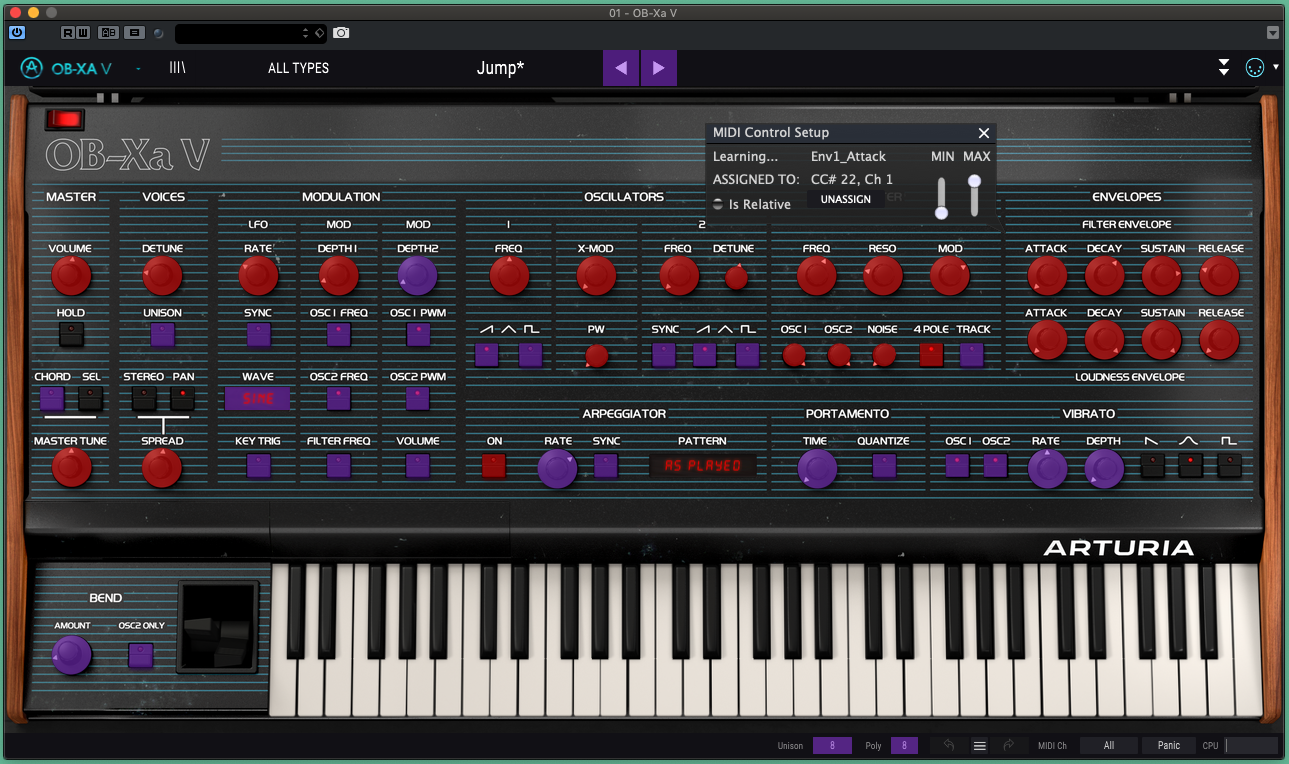
A synth like this is designed to be twiddled with, whether you know exactly what each function does or not. Analog synthesizers like these aren’t just tone generators – they are instruments and were made to be played. Mapping continuous controllers is simple, as it should be. Click the MIDI icon, select the parameter and send data from the hardware knob or slider of your choosing and boom, you’re ready to rip. Patch navigation is also a simple affair and quite seamless, even as you continue playing. Speaking of patches, it’s quite hilarious, if not a bit expected, that the first patch is a filtered, bratty saw-brass preset simply called “Jump”. Go ahead, bust it out one time.
CALL DOWN THE THUNDER
The 400+ patches included on-board range from the sounds of “back then” all the way to some pretty cutting edge-sounding stuff for right now. Whether you’re cutting the many flavors of EDM, darkwave, industrial, electropop or anything else, the OB-Xa is up to it. True, its forebearer was not the most complicated of synthesizers and as such, neither is this. If you’re angling for 20,000 wavetables to choose from, well, this has three. There aren’t pages after pages of parameters or options a la Native Instruments’ Massive or xFer’s Serum. Those are both arguably more “capable” synthesizers on paper, but if you’re looking for living, fire-breathing analog, you’ve come to the right place.
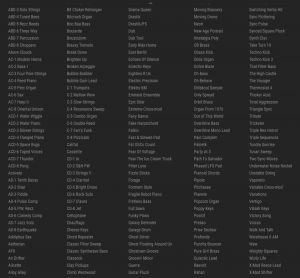
Every corner of the colorful world of analog synthesizers is on display. Pads are swirling, lush and intoxicating. Basses lumber with extreme amounts of weight. The quite-exacting emulation of the Curtis chips gives you subs and growls that will definitely shake floors. Leads traverse the classic Rick Wakeman stylings of late 70’s prog rock (wizard costume recommended but not required) all the way into raving-mad squelches and searing highs. And though the original was never explicitly designed for percussion, you can most certainly create some great kicks, snares, toms and hi-hats. Want that classic TR-808 sine kick or some Simmons-esque “PJOO! PJOO!” synth toms? Don’t threaten the OB-Xa with a good time here, it’s more than up to the task.
BEYOND RETRO…. NOW-TRO!
Now that we’ve all enjoyed those photo albums from a decade long passed, let’s talk about what the OB-Xa can do for your music today. True to its original design, Arturia gives you two oscillators (plus a noise wave) but now with up-to 16 voices of polyphony (which you would never, ever get with even the fully-expanded original). By the standards of these 80’s megasynths, it’s much more than plenty.
The arpeggiator is more of an Arturia-based creation and gives you your basic ups, downs and all-arounds. With so many synthesizer plug-ins out there that offer you a few-too-many ways to slink up and down a fistful of notes, this keeps things refreshingly more simple. Remember, the original hardware shipped years before the MIDI standard was ever put to work – so be gracious for the tempo sync. It wasn’t always this easy!
Programming your own patches on this behemoth is, as synths of this era were, an intuitive process that rewards exploration. No pages of menus or multi-function encoders. You’ve got a lot of one-knob-per-function rotary controls for creating envelopes, modifying LFO’s, dialing in your filters – it’s all right there. Were it me, I’d ship software like this with a “blank patch” or “reset” button that leaves you with one active saw wave and not a thing more to encourage people building from the ground up. Getting your inspiration from a preset is fine, but you can quickly get caught in the branches of turning off unwanted effects or modulation.
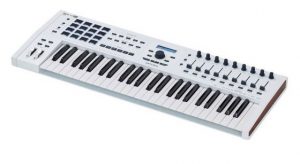
Speaking of, a simple suite of onboard effects is included which will also look quite familiar to owners of other Arturia synthesizers. You’ve got your basic delays, reverbs, distortion and modulation effects. While there’s nothing groundbreaking here, having quick access to the “most-wanted” type effects without inserting another plug-in can come in handy for basic chores. I suspect that Arturia, who make some seriously good time-based and modulation plug-ins, might want you to consider an additional purchase. But for your basic reverb and chorus tasks, the OB-Xa provides four slots to work with, all capable of automation and being driven in series or parallel. By comparison, the original Oberheim provided zero, so stop your moaning or I’ll turn this car around right now.
An interesting feature was the stereo functionality, letting you spread a note from ear to ear in a few different ways. With the width control, you can dial in a little to keep your center unencumbered… or take all 88 keys coast to coast. With pads in particular, I loved the way it tickled the margins of the stereo image. This is a good time, however, to remind the newer generation among our readers that anything under 200hz does best right up the middle in mono.
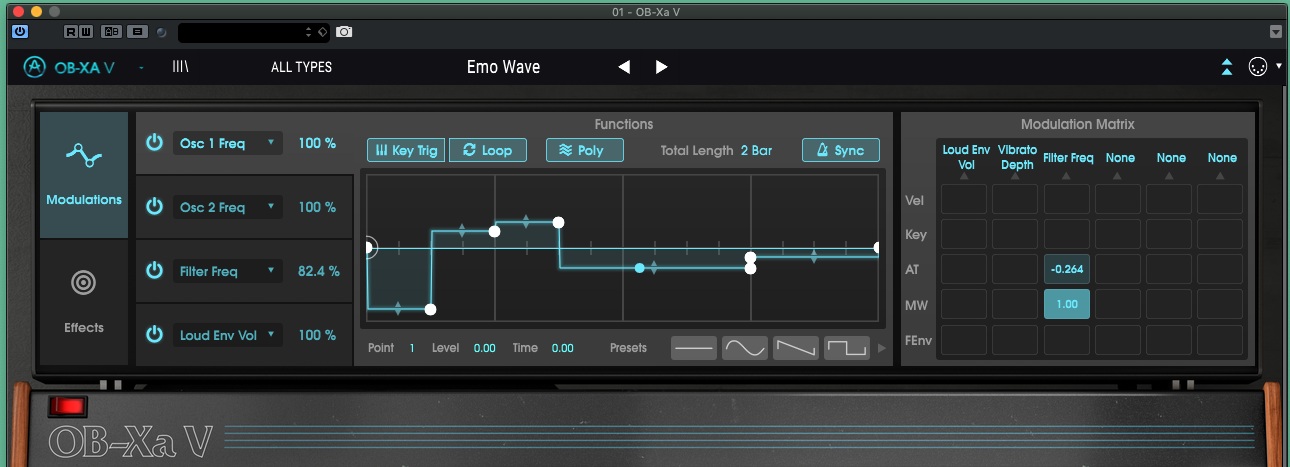
Lastly, Arturia’s modulation matrix is a quite intuitive way to draw in envelopes via time or tempo, be they waves, directional or finger paintings – and then route them to any parameter you wish, including effects. To be clear, this is an Arturia feature, not from Oberheim – and users of their other software synthesizers will recognize it right away. Punters and professionals alike should have no issue experimenting their way through the learning process until its true potential is realized. Once you figure out how to put this feature to work, you can unlock possibilities that were unfathomable during the Material Girl-era.
THE BIGGER THE CUSHION…
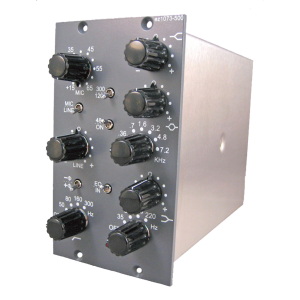
If you’re really trying to nail down the “eighties sound”, consider giving the OB-Xa a trip through a little tube-, transformer- or transistor-based saturation. That’s not an affront to the sound of this incredible instrument at all – it is as close to the real deal as you’re going to find out there. But it helps to remember that the synthesizer itself was just one part of the recording chain when we’re talking about all those 80’s records that made the Oberheim famous. I’ve found that with many 70’s and 80’s inspired soft synths, rubbing a little dab of analog on there really drives it home. My personal favorite, the AML ez1073 500-series preamps, get pulled in to give these sorts of chores some transformer-based cushion and harmonic richness – emulating the outputs’ trip from synth to console to tape to console to tape again. Try it with your saturation plug-in or hardware of choice.
DEFINING THE DECADE OF EXCESS
There are literally hundreds of software synthesizers out there. Some try to define the sound of the future with so many options that a hardware version wouldn’t fit on your dining room table. Still others relish the classic formats and flavors, using physical modeling to keep the sounds and stylings of their influences alive. The greatest ones, however, manage to build a bridge between then and now, giving the user that awe-inspiring “analog-type thing”, but harnessing it with exacting digital control that would have never been possible in their day.
Once I mapped out my “most wanted” hardware knobs and sliders, I remembered the first time I played with a Roland Juno 106 in my neighbor’s garage at the all-too-impressionable age of 12. My favorite synthesizers, no matter their inner workings, have always been the ones that beckon you to twist and twiddle your way to parts unknown until you’ve either gone so far off the map you reset everything, or find an inspiring tweak that you can undeniably call your own. To be sure, you’re far more likely to get there with actual knobs and sliders than mousing around a mouse. But once you’ve got this impressive beast under control, the past is the future.
Arturia OB-Xa $199 USD, Mac/PC 64/32bit, AAX, AU and VST
-
Arguably the most “analog sounding” digital synthesizer available.
Easy controller mapping lets you slip, slide and squiggle like it’s 1984.
Captures the sound of then, but enables the sonics of tomorrow.
-
Effects section is definitely a little tacked-on.
Needs a simpler way to start with a blank canvas.
Another background authorization app? iLok please.
Whether you’ve ever used the real thing or not doesn’t matter. This is not just the sound of analog, but the joy of creating with it. It’ll go all twelve rounds with any real hardware synth you’ve got. Seriously.
BUT WAIT… THERE’S MORE
I like reviewing Arturia’s stuff. I casually mentioned that their CZ V Casio CZ-1 clone (having owned the rackmount version in the 1990’s) looked interesting and if they felt like it would they mind sliding me an install? They obliged and so, if you don’t mind, I’d like to say a few words. The Casio CZ family are quite literally opposite of the Oberheim in every conceivable way, so if “Tubular Bells” is more your speed, do read on.
I go back with Casio. Way back. I received my first “synthesizer” Christmas, 1981. The Casiotone MT-40, with it’s 29 mini keys, eight “rhythms” and four banks of twelve or so presets, sucked the life out of so many C batteries that I might have caused climate change. Though much more of a toy by comparison, it was pivotal to my life as a musician. Ironically, these fetch several hundreds of dollars now as the ‘rock’ accompaniment rhythm was immortalized in reggae music’s “Sleng Teng Riddim” in the mid-80’s. Yes, I still have mine and no, it’s not for sale. I’m glad my mom doesn’t have a scanner, because she’s still got the photo of me opening that box on Christmas morning with my face forever preserved in pure, bacchanalian joy.
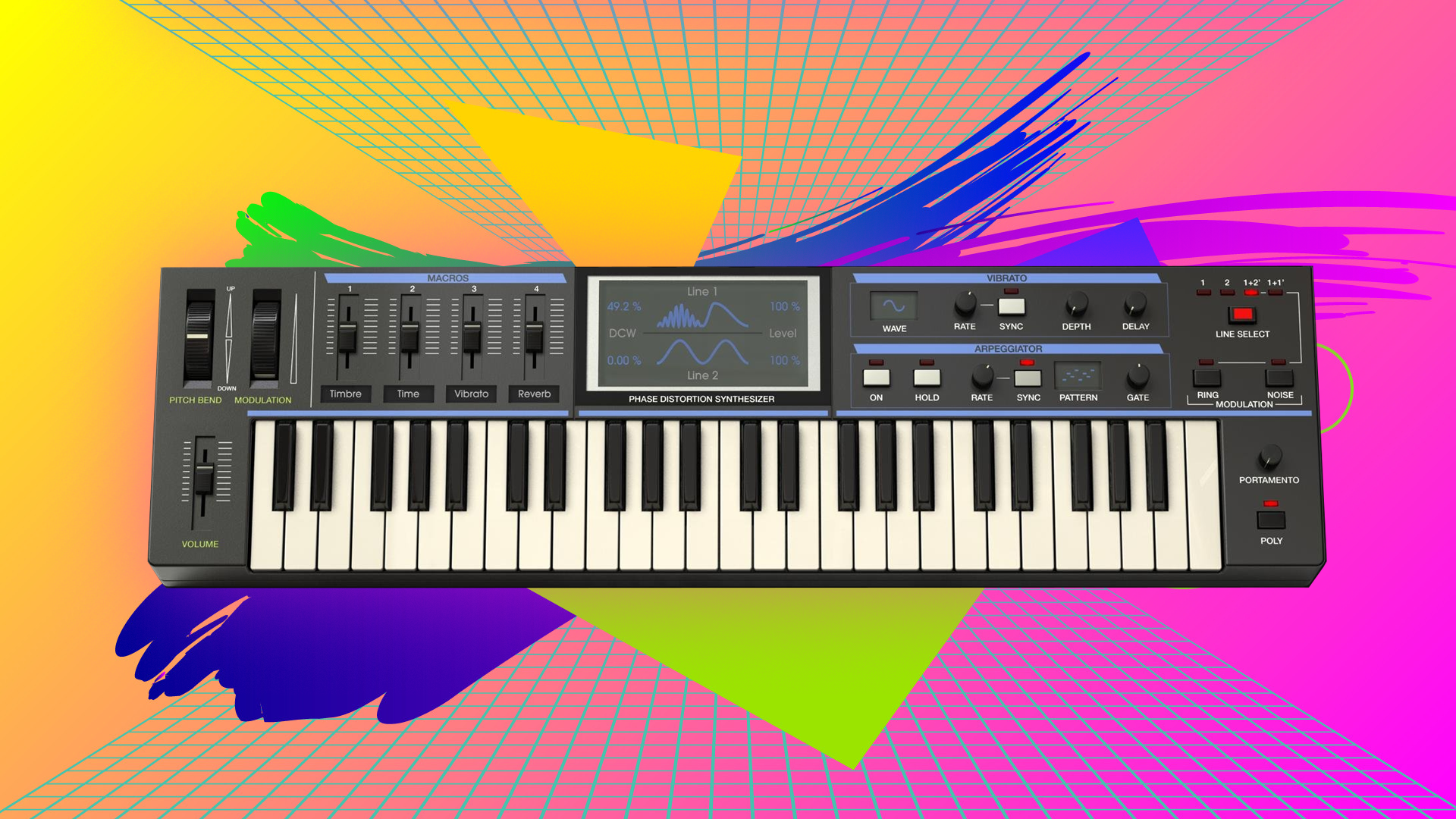
CZ-ING THE CLASSIC CASIO SOUND.
As this Japanese company sold far more musical calculator wristwatches than synthesizers, Casio’s professional products live in the esoteric fringes of synthesizer history. The VZ-10 that I had purchased for maybe $200 back in 1995 certainly garnered a long stare, positioned next to such heavyweights as my Kurzweil K2500RS, Nord Lead 1 and Roland MKS-80. (Did I forget to mention that back in the pRe-Birth 1990’s, synthesizers were these big boxes you had to plug into a mixer? Sorry.) The CZ family, though difficult to navigate and program, were quite capable synthesizers, sonically reminiscent of the more-expensive Yamaha DX-7 in many ways. No, there was no instant-gratification or squelchy analog filter. The “phase-distortion synthesis” engine lacked the immediacy and heft of my Super Jupiter’s rampaging analog oscillators. But these curious synths did have a certain “something” to them. Designed to compete with the DX-7 (the most successful hardware synthesizer in history), adventurous programmers could tease out some truly unique sounds.
So when I saw the Arturia CZ V, I had to give it a try. There were some very progressive ideas going on inside the Casio CZ’s nascent 80’s digital technology. “Phase Distortion”, put simply, means the user could horizontally ‘push’ or ‘pull’ the shape of a waveform, adding asymmetry to the wave. From there, you could optionally superimpose one wave against the other to create all manner of auditory curiosities and abnormalities. Couple this with an 8-stage envelope (letting you create a second envelope beyond or within the existing ADSR) and yes, your quiver of tones certainly had some new arrows.
THESE BELLS ARE TUBULAR, DUDE
The CZ curried favor with many synth pop and new-age artists in the 1980’s, Vincent Clark and Jean Michell-Jarre notably among them. For the MTV crowd, that chiffing pipe lead in Salt N Pepa’s “Push It” was famously a CZ patch. The crucial flaw to these synthesizers was navigating a seemingly endless sea of sub-menus and multi-function encoders. That’s not to say you couldn’t make this curious $500 box do some truly unique and amazing things – but that you’d be rolling up your sleeves and digging deep into its lair to make it happen, aided only by a small multi-character LCD. As a longtime fan of the Kurzweil 2000 series, with their almost DOS-like environment locking away a tower of extreme sonic mayhem, I was able to at least understand its language, even if I couldn’t speak it fluently.
What Arturia has done here is not so much an emulation, but a reverse-engineering. As is the case with digital anything, the trick is to simply replicate the algorithms’ code. Granted it’s been decades since the original VZ-10 adorned my racks, but it was quickly apparent that (save for the original’s abhorrent line noise and crappy DAC’s) what you were seeing was exactly what you were getting. Like I’d mentioned before about adding some analog transformers to the OB-Xa to frame the era faithfully, a little digital degradation can really drive the point home if you’re going for “exact”. Even the cheapest of modern converters today are hundreds of times more capable than anything the 1980’s had on offer.
(Warning: This could be you…)
WELCOME TO THE MACHINE
Armed with modern niceties like a screen, keyboard and mouse, Arturia gives modern users a far more efficient and intuitive way to get inside the troubled brain of this unique engine. True, you may never find yourself awestruck by fat and filthy low end the way its analog brethren can, but that’s not to say the CZ V doesn’t arm the user with plenty of compelling sounds. The addition of four assignable “macro” sliders give you access to parameters buried deep within the recesses of the original. For example, creating and controlling a low-pass filter from the PD engine inside the original could take hours of head-scratching, but Arturia have it front and center where necessary.

As with the OB-Xa, you have the addition of Arturia’s robust modulation matrix, a workhorse effects section, arpeggiation and a huge array of preset sounds to begin unlocking the creative possibilities within. Had they stuck with a true 1:1 recreation, I don’t believe the CZ V would make for such a wonderful instrument. And again, if you aren’t the owner of a controller with at least a few sliders or knobs, you’re going to be missing the real joy of synthesis – whether you call it “noodling” or “programming”. Confining your creativity to one click and drag at a time woefully ignores the amount of fingers and toes human evolution has provided you with.
While comparisons to other O.G.-era digital wavetable, phase modulation and PCM synthesis engines are inevitable, the CZ V does provide some unique opportunities – especially with the voice stacking and multi-stage envelopes. Admitting, “I have no idea what any of this means” and diving headlong into editing will give you just as much of a chance to create something great as burying yourself in the manual for a week.
WHY? WHY NOT?!?
We’ve come quite a long way from entire racks and walls of synthesizers taking up precious studio real estate. Prior to the new millennium, space was a consideration and you’d often find yourself wishing you could have just one more synthesizer to open the doors to creativity. The endless hunt for a new sound benefits from having as many possible sources as possible. By comparison, your plug-in folder ALWAYS has room (sometimes too much… but we’ll discuss option anxiety another time).
To be honest, though – the $199 MSRP* feels a bit lux for a plug-in like this. That’s not to say it’s not quality. Arturia consistently produce the very best-in-class synthesizers like this. But a Casio – even a “PRO” Casio errs a tad gimmicky. Those producing on a budget could likely pass this over (or download a cracked version, the thievin’ bastiges) and make do with a free or much cheaper option. Even those of us with the extra scratch to spend might find another place to make that two hundo go farther.
(*You can own CZ V as part of the entire V Series package for $499. That effectively knocks down the price to about a 20-spot and gives you their entire collection.)
The Arturia CZ V really does offer you a “something new”, “something weird” or “something different” that other synthesizers (hardware OR software) seem to have missed. Phase Distortion synthesis, as heard here and more famously with the DX 7, may have never been as immediately desirable or well-understood compared to wavetables or subtractive synthesis, but to ignore it is to miss out on a whole new way to color and shade.
When you combine their true blue emulation with a much more intuitive way to harness it, Arturia’s CZ V is a welcome addition to any workstation’s synthesizer arsenal. Once you get past the cheeky, utter Casio-ness of it all, it’s a quite a worthwhile weapon in your warchest.
Arturia CZ V $199 USD, Mac/PC 64/32bit, AAX, AU and VST
Adds programmability and editing the original simply did not.
Modulation matrix really unlocks what’s possible with Phase Distortion synthesis.
Maybe not the most “necessary” set of sounds, save for esoteric 80’s retrobilia.
More of a flaw of the original… but this is not the most joyful hardware to program.
BACK TO THE FUTURE
The 1980’s were a booming cycle of emerging technology in the world of synthesis and Arturia have brought these two quite dissimilar pieces of history into modern times wonderfully. On the one hand, the Oberheim OB Xa pushed the possibilities of analog synthesis to the bleeding edge of technology – finally giving users the polyphony and reliability that plagued earlier designs. And on the other, the Casio CZ family brought the emerging technology of digital synthesis into the hands of hobbyists and pros alike – albeit with the difficulty of navigating menu after menu of arcane and occasionally difficult-to-understand parameters.
At the end of the day, when it concerns emulation what matters most is getting it right. And to that end, Arturia has simply NAILED the sounds of both. Go ahead and track down the originals and do a head-to-head if you absolutely must, but the point here is that you simply don’t have to – and Arturia’s synthesizers fit in a folder, not on a stand. In fact, once you address the signal flow beyond the synths themselves, you’ve got as close to the real thing as you’ll ever want or possibly need. Now that we’re done here, you may now return to remembering the synth line to “Take On Me” in your Ocean Pacific shirt. You know you’re gonna do it.
To purchase, please consider using our Affiliate Link HERE. It doesn’t cost you any extra and helps keep out lights on and laptops charged.



